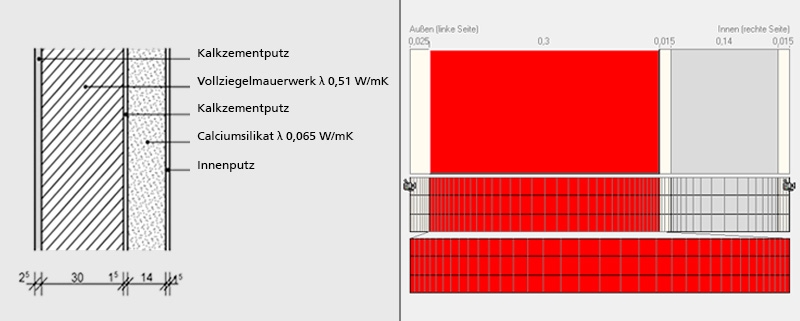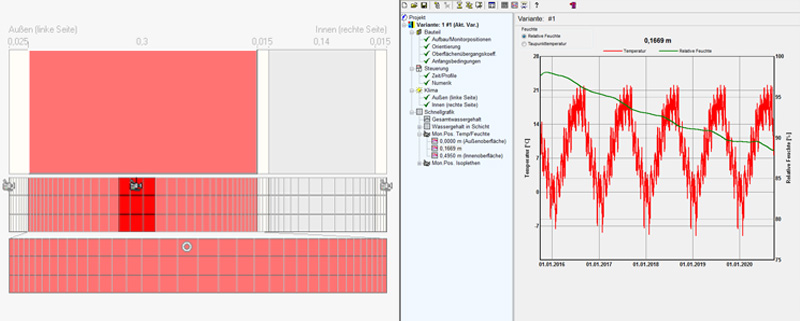WUFI® Pro is the standard program for evaluating moisture conditions in building envelopes. Of all the programs in the WUFI Software Family, it is the easiest to use. WUFI® Pro performs one-dimensional hygrothermal calculations on building component cross-sections, taking into account (where appropriate) built-in moisture, driving rain, solar radiation, long-wave radiation, capillary transport, and summer condensation. Other programs and traditional methods, like the Glaser-Method, do not consider these effects and are thus limited to only evaluating winter condensation effects. WUFI® Pro determines the hygrothermal performance of building components under real climate conditions. This type of comprehensive dynamic hygrothermal analysis is needed for accurate design and is required, for example, by the DIN EN 15026 standard.

Targeted audiences
Designers

Design of building components.
For implementing conversions
Substitute for the Glaser-Method
Consultants

Damage investigations
Mold growth assessments
Assigning liability in planning or execution*
Building Products Companies

Development and optimization of products and systems
Performance in other climates
Determination of ranges of application
Construction Companies

Ensuring design correctness
Evaluation of alternative designs
Determination of risks during the building process (e.g., effects of rain)
* by computing the expected hygrothermal behavior of the affected construction: If the construction remains damage-free in a simulation which accounts for normal imperfections (e.g. driving rain leaking behind ETICS, convective moisture entry into lightweight components), then the workmanship is to blame. On the other hand, if the simulation reproduces the damage, then poor design is to blame.
Application
The evaluation of the simulation results is the responsiblity of the user and not of the software. Assessing results requires experience and understanding of building science. It is recommended that all users attend a seminar dedicated to WUFI® Pro. The seminars educate users about basic building physics and give confidence for handling the software. In addition, such seminars provide information on new models and evaluation options.

Program details
The demonstration video shows how it is possible to carry out a WUFI® Pro simulation with relatively few mouse clicks.
The WUFI® Pro user-interface can be switched to any of the following languages: Danish, German, Chinese, English, English (Australia), English (United Kingdom), Finnish, French, Italian, Japanese, Korean, Norwegian, Polish, Portuguese, Swedish, Spanish, Czech. The online help is available in German, English, French and Japanese.
WUFI® Pro can calculate in SI units or US IP units.
The multi-language material databank has about 600 pre-defined building materials and can also accept user-defined materials. WUFI® Pro contains climate data for about 149 locations (Europe, North America, South America, Japan, and Oceania).

WUFI® – Supplementing or replacing the Glaser-Method?
In Germany the standard for moisture protection in construction is the DIN 4108 Standard. When applicability of the Glaser-Method is questionable and for special situations (e.g., green roofs, interior insulation), DIN 4108 recommends evaluation with hygrothermal simulations. WUFI is explicitly mentioned by the standard as a method of choice.
Since 2007, the European standard, EN 15026, regulates procedures for performing hygrothermal simulations throughout Europe.
Guidelines 6-4 and 6-5 of the WTA refer to hygrothermal simulations for certifying interior insulation. A Glaser-Method calculation is not sufficient.
In the United States, hygrothermal building component simulations are part of ASHRAE Standard 160 and are also described in the ASTM-Handbook.
Last Update:



